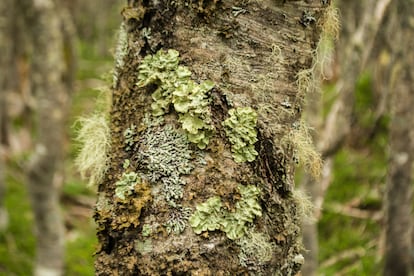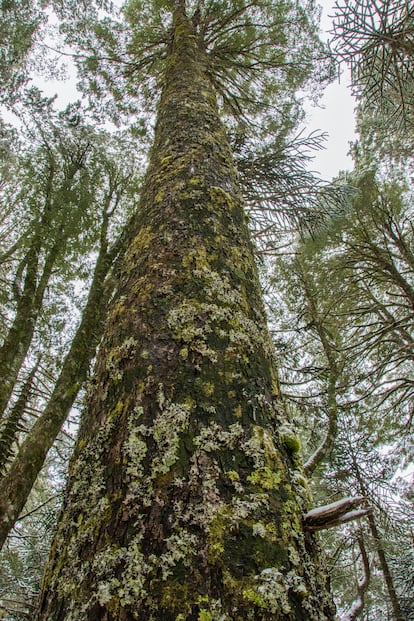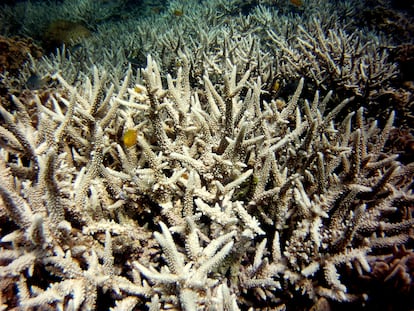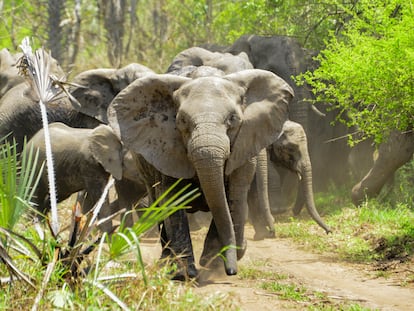What is a holobiont and why can it change our understanding of the world?
An entity formed by the different species that become an ecological unit, a holobiont demonstrates the importance of symbiosis to our health and the planet

In nature, competition reigns and the strongest survive. Or, at least, that’s what we’ve often heard. But the planet is much more complicated than that, because we earthlings relate to other species at levels that we often don’t realize. As the biologist Lynn Margulis and the writer Dorion Sagan once said: “To understand the true complexity of life, you must understand how organisms come together in new and fascinating ways.”
That’s exactly what the holobiont concept is all about. It refers to an entity – a holobiont – formed by the association of different species that become an ecological unit. In other words, when an animal or plant (a host) lives in symbiosis with the microorganisms it hosts (symbionts), it is a holobiont. It’s like a group of fused beings, or a multi-species complex.
Scott F. Gilbert, a developmental evolutionary biologist and professor emeritus at Swarthmore College and the University of Helsinki, explains that “all organisms appear to be holobionts […] we’re composed not only of cells derived from the zygote (fertilized egg cell), but also from symbiotic bacteria, fungi and viruses.”
“Each animal is a biome: a set of interactive ecosystems,” Gilbert explains. “And these symbiotic microbes don’t just travel with us. They help build our bodies, regulate our metabolic processes and build our immune capabilities. This has many implications for how we look at life.”
In fact, our bond with microorganisms is so deep that we become the ecosystem where they live, while they influence our development, health and behavior.
For Cristina Dorador, a microbial ecologist and professor at the University of Antofagasta in Chile, “a holobiont invites us to think in different magnitudes. It may seem that the microscopic and the immense do not converse… but in reality, they do.”
This perspective has been confirmed by recent technological advances. “The big step was in the 2010s, with massive DNA sequencing techniques, because complete microbial groups were discovered that were invisible to classical techniques. In addition, the Human Microbiome Project unveiled the microbial diversity in the human body, debunking some of the theories that existed at the time,” Dorador adds.
Perhaps the best-known example is the intestinal microbiota: the community of microorganisms that allows us to break down food and is key to our immune system.
“From an anatomical point of view, approximately half of the cells in the human body are microbial. In addition, each species of microbe is not associated with us randomly, but is found in specific places. We receive these microbes as we pass through the birth canal. They are parting gifts from our mother. These microbes colonize our body – especially our gut – and help determine our development,” Dr. Gilbert says.
Unsurprisingly, microbes also play a role in diseases ranging from depression to cancer. Indeed, tumors have an associated microbiome. The presence of these microorganisms would explain why some people are more sensitive to immunotherapy.
In another area, there are studies that show that the replacement of bacteria in the intestine could help reduce autistic behavior in rats. Dorador – who has participated in research on autism and microbiota – says that “it has been reported that around 40% of people on the autism spectrum have some gastrointestinal problem. It has been determined that an enrichment of certain groups of bacteria occurs. We wanted to find a model to explain whether this change at the microbial level – which we don’t yet understand – is generating metabolites or products that somehow alter neuronal function.”

A holobiont generates new morphological, physiological and immunological characteristics – among others – that do not exist separately in species. Entomologist Constanza Schapheer’s favorite examples of this are nutrient-recycling insects, such as termites.
“These animals harbor microorganisms – such as bacteria and protists – in their digestive system, which help the termite absorb nutrients that it otherwise couldn’t. The acquisition of intestinal symbionts was key in the evolution of these insects. There are many similar examples in nature – among the most paradigmatic are lichens and corals,” notes Schapheer, who is a postdoctoral researcher in the Faculty of Agronomy at the University of Chile.
Cows, meanwhile, eat grass but their genome does not produce enzymes capable of digesting cellulose or other compounds in their feed. The good news for them is that their symbiotic microbes – located in their rumen – are responsible for processing what these mammals cannot.
Some species change when they acquire new microorganisms. Gilbert mentions the red turpentine beetle: “It’s a minor pest in the United States, where its symbiotic fungi dig holes in damaged trees. However, when it was accidentally exported to China, the beetle gained a new set of fungal symbiotes that allowed it to bore holes into healthy trees, killing them.”
In other words, what we consider to be an “organism” can actually be a set of integrated organisms. For this reason, scientists and philosophers – such as Gilbert and his colleagues – have questioned the very existence of the “individual” as we typically understand it.
“We have evolved to expect these symbiotic microbes and their signals, so each of us functions as a community or a team. We are only individuals to the extent that one community differs from another community, or one team differs from another team. I am the Scott Gilbert Team,’” says the scientist, who has also contributed to the book Microhabitable.
Understanding ourselves as holobionts not only has implications for our health, but also for the environment. Human beings tend to conserve species or ecosystems separately, without worrying about maintaining the relationships and cycles that sustain organisms as a whole. But a forest or desert cannot survive without the links that its macro and micro inhabitants weave.
This inspired Schapheer and other colleagues to propose the concept of “ecosystem holobiont,” which refers to a holobiont that carries out key ecological processes for the conservation of nature.
Let’s go back to the creatures that decompose organic matter, a fundamental task to have healthy soils that support, for example, agriculture. If the degradation of said matter were carried out only by microorganisms, it would be very slow (due to their tiny size). However, if they have a larger partner – such as an insect – they will develop the process together more quickly and easily. This is because the animal, which houses them in its digestive tract, has a greater ability to move and has mouthparts to break up the material.
Schapheer explains that “we call this phenomenon an emergent property. When this property occurs thanks to a holobiont and is part of a key ecosystem process, we’re talking about an ecosystem holobiont. Among the reasons why our planet has the conditions it has is thanks to these processes, which is why it’s vital to maintain them.”

Health crises, biodiversity loss and climate change are some of the major problems we are currently facing. Among the multiple consequences is the breakdown of symbiotic relationships – such as soil degradation that deprives plants of their symbiont fungi and bacteria – or the increase in sea temperature that stresses corals, which, in response, expel their microalgae, triggering bleaching. Likewise, the excessive use of biocides (such as antibiotics or disinfectants) kills microbes that have been part of our evolution.
Gilbert stresses that “being a holobiont means we are products of our environment in ways we never imagined before. A healthy environment is necessary for healthy individuals. This means that the environment must be healthy for the microbes we need for our bodies to function, as well as the microbes that help make the plants we eat.”
For this reason, thinking in a “holobiont way” could contribute both to the understanding of the phenomena and to possible solutions.
“For the conservation of species – rather than conserving the individual – we should focus on conserving functional units. That is, the set of beings that make up the holobiont. In this way, organisms and ecosystem processes would be taken into consideration, so that the planet continues to function,” Schapheer says.
But for Dorador, there’s also a lesson in humility in all of this: “We’re an ecosystem, where it’s important to share and cooperate. The massive symbiosis and the holobionts that exist on the planet open up ways to understand complex problems and help us to position ourselves from [a place of] diversity.”
Sign up for our weekly newsletter to get more English-language news coverage from EL PAÍS USA Edition
Tu suscripción se está usando en otro dispositivo
¿Quieres añadir otro usuario a tu suscripción?
Si continúas leyendo en este dispositivo, no se podrá leer en el otro.
FlechaTu suscripción se está usando en otro dispositivo y solo puedes acceder a EL PAÍS desde un dispositivo a la vez.
Si quieres compartir tu cuenta, cambia tu suscripción a la modalidad Premium, así podrás añadir otro usuario. Cada uno accederá con su propia cuenta de email, lo que os permitirá personalizar vuestra experiencia en EL PAÍS.
¿Tienes una suscripción de empresa? Accede aquí para contratar más cuentas.
En el caso de no saber quién está usando tu cuenta, te recomendamos cambiar tu contraseña aquí.
Si decides continuar compartiendo tu cuenta, este mensaje se mostrará en tu dispositivo y en el de la otra persona que está usando tu cuenta de forma indefinida, afectando a tu experiencia de lectura. Puedes consultar aquí los términos y condiciones de la suscripción digital.
More information
Últimas noticias
Mustafa Suleyman: ‘Controlling AI is the challenge of our time’
Venezuela breaks energy agreements with Trinidad and Tobago due to alleged complicity with the US
The murder of Michele and Rob Reiner: A tale of horrific days in Hollywood
Trump orders a ‘complete blockade of sanctioned oil tankers’ going to and from Venezuela
Most viewed
- ‘El Limones’ and the growing union disguise of Mexican organized crime
- Christian Louboutin: ‘Young people don’t want to be like their parents. And if their parents wear sneakers, they’re going to look for something else’
- ‘We are dying’: Cuba sinks into a health crisis amid medicine shortages and misdiagnosis
- A mountaineer, accused of manslaughter for the death of his partner during a climb: He silenced his phone and refused a helicopter rescue
- The low-cost creative revolution: How technology is making art accessible to everyone









































